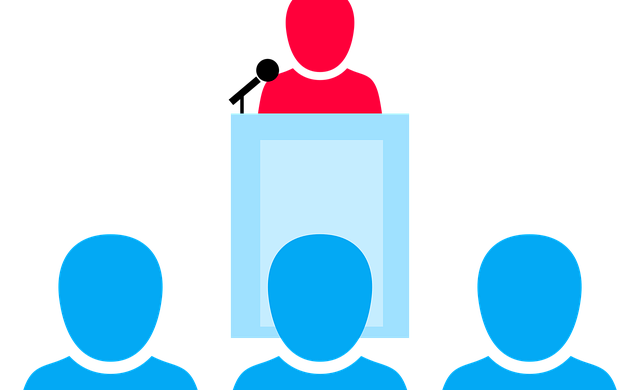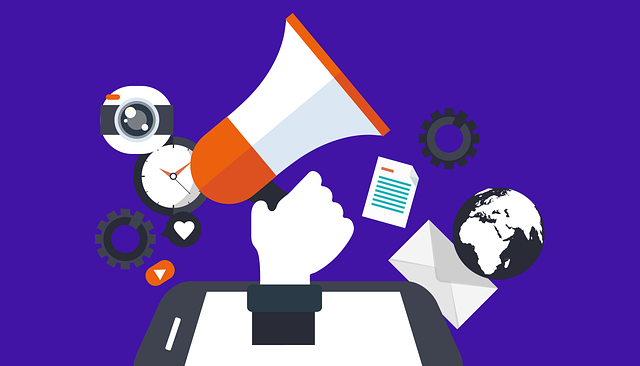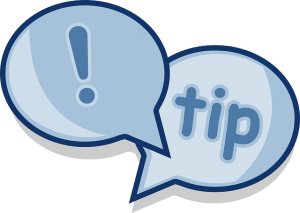Webinars, as you've probably noticed, have taken the digital world by storm. They're not just a trend, but a formidable tool for learning, sharing, and connecting in our increasingly digital world.
But you're not here to just jump on the bandwagon. You're here because you want to create a webinar that stands out, one that leaves a lasting impression, a webinar that's so interesting and engaging, your audience can't help but sit up and take notice.
See, the real magic of a webinar isn't just in sharing information — it's in creating a shared experience. It's about making complex ideas understandable, sparking meaningful conversations, and building a sense of community among like-minded individuals.
It's about harnessing the power of technology to bridge the physical distance and creating a virtual space where learning and engagement thrive. And that's precisely what we're going to delve into today.
Webinars can feel daunting, especially if it's your first rodeo. There's content to plan, technology to wrangle, audiences to engage, not to mention the pressure of performing live.
But don't you worry, we're going to break it all down, bit by bit.
From understanding your audience and crafting engaging content, to leveraging multimedia and improving your delivery style, we'll walk you through everything you need to make your webinar not just more interesting, but downright irresistible.
By the end of this article, you'll be armed with practical tips, techniques, and insights that you can apply to your next webinar, helping you create an engaging and memorable experience for your audience.
But more than that, you'll gain a fresh perspective on webinars — not as a chore to be ticked off your to-do list, but as an opportunity to share, connect, and engage in a way that only webinars can.
Let's dive in!
Disclosure: Although I receive affiliate compensation at no additional cost to you to support this site that compensation in no way influences my recommendations, which are strictly informed by my 10+ years of online business experience consulting for clients large and small. My aim is to always recommend tools that offer the best return for your investment (for more details, read my Affiliate Disclosure).
Understanding Your Audience
First things first, let's get to know your audience.
Who are they? What makes them tick? Are they seasoned industry professionals looking for deep insights? Are they aspiring entrepreneurs hungry for knowledge? Or maybe they're curious enthusiasts eager to explore a new topic?
Regardless of who they are, one thing is clear: understanding your audience is the cornerstone of a successful webinar.
Getting a deep understanding of your audience involves more than just knowing who they are. It's about delving into their needs, their interests, their pain points, and their aspirations. It's about understanding their expectations from your webinar and figuring out how you can exceed them.
So, how do you go about doing that? Well, there are a few ways. Surveys are a great tool to gauge your audience's interests and expectations.
You can send out a pre-webinar survey to your registered attendees asking them about their background, what they hope to learn from the webinar, and any specific questions or topics they want to be covered.
Social media platforms are also a treasure trove of information. Look at the kinds of questions your followers are asking, the discussions they're engaging in, the posts they're sharing.
These can give you invaluable insights into what your audience is interested in and how you can cater to their needs.
Also, consider the questions and comments you receive during previous webinars or in your other content. Are there common questions or themes that keep coming up? This feedback can be a goldmine for understanding your audience's needs and curiosities.
But here's the thing: understanding your audience isn't a one-and-done deal. It's an ongoing process that doesn't end even when your webinar is over. After your webinar, ask for feedback.
What did they like? What didn't they like? What do they want to see more of in the future? This post-webinar feedback can be incredibly useful for improving future webinars.
Remember, when you're hosting a webinar, you're not just providing information; you're serving your audience. You're addressing their needs, answering their questions, and helping them achieve their goals.
And to do that effectively, you need to understand them inside and out. So, before you jump into planning your content, take a step back and spend some time getting to know your audience. Because at the end of the day, a webinar that resonates with its audience is a webinar well done.
Crafting Engaging Content

Now that you've gotten to know your audience, it's time to roll up your sleeves and delve into the heart of your webinar: the content.
And let's be clear — content is king. But not just any content. We're talking about content that's engaging, relevant, and downright irresistible to your audience.
The journey to compelling content begins with a powerful topic. It's not just about choosing a subject that's relevant to your audience; it's about finding a topic that excites them, that sparks their curiosity, and makes them say, "I can't miss this."
You want to offer them something they can't easily find with a simple Google search. Something that brings unique insights, fresh perspectives, or in-depth analysis. Your topic sets the stage for your webinar, so make sure it's a showstopper.
But a compelling topic is just the first step. The magic happens when you take that topic and weave it into a narrative — a story that draws your audience in and takes them on a journey.
Remember, a webinar isn't a lecture or a textbook; it's a conversation. It's an opportunity to share, explore, and learn together.
So, how do you transform your content into a captivating narrative? Start by breaking down your topic into digestible chunks. Each of these chunks can be a key point or an idea that you want your audience to take away.
Think of these as the chapters of your story, each contributing to the overall narrative.
Next, find ways to make these key points relatable and understandable. Use analogies, metaphors, and real-world examples to bring abstract or complex concepts to life.
If you're explaining a technical process, for instance, compare it to a familiar everyday activity. If you're discussing a complex theory, illustrate it with a story or an anecdote.
But keep in mind that at the heart of your content, there should be a conversation. Don't just talk at your audience, engage them.
Ask questions, invite opinions, and encourage participation. This not only keeps your audience engaged but also helps them absorb and retain the information better.
Adding Interactivity to Your Webinar

Speaking of conversations, let's talk about one of the most potent tools in your webinar arsenal: interactivity.
Interactivity transforms your webinar from a monologue into a dialogue, from a passive experience into an active one.
It's what keeps your audience on their toes, engages them, and makes them feel like they're part of the experience.
So, how do you weave interactivity into your webinar? Well, there's a plethora of ways. Live polls and quizzes are a great start. They not only break the ice and get your audience involved but also provide valuable insights into your audience's thoughts and opinions.
But don't stop there. Encourage your audience to voice their thoughts, ask questions, and share their experiences throughout the webinar. A live Q&A session can be incredibly engaging, allowing your audience to delve deeper into the topics that interest them the most.
Gamification is another fantastic way to ramp up the interactivity. Turn a segment of your webinar into a game, maybe a quiz competition or a scavenger hunt. This not only adds an element of fun but also helps reinforce the information in a memorable way.
Leveraging Visuals and Multimedia
Now, let's add another dimension to your webinar: visuals. We've all heard the saying, "A picture is worth a thousand words." And it couldn't be more accurate, especially in a webinar.
Humans are visual creatures. We process visual information much faster and remember it much longer than textual information. That's why leveraging visuals and multimedia in your webinar can be a game-changer.
But what kind of visuals are we talking about here? Well, there's a wide array to choose from. Images, for instance, can add color and context to your content. A well-chosen image can illustrate a point, set a mood, or simply break up the monotony of text and speech.
Infographics can be incredibly useful in explaining complex concepts or processes. They break down the information into digestible chunks and present it in a visually appealing way. They're not just easy to understand; they're also easy to remember.
Videos can take your webinar to a whole new level. They can be used to demonstrate a process, share a testimonial, or even take your audience behind the scenes of your operation. Videos can make your content more dynamic, more engaging, and more memorable.
Just remember, the key to effective visuals is relevance and quality. Every visual you use should support your content and enhance your audience's understanding.
And of course, they should be high-quality. Blurry images, pixelated videos, or poorly designed infographics can do more harm than good.
Luckily, you don't need to be a professional designer to find high-quality visuals. Websites like Unsplash and Pexels offer a vast collection of high-quality, royalty-free images.
Tools like Canva can help you design stunning infographics, even if you're not a design whiz.
So, there you have it. Crafting engaging content, adding interactivity, and leveraging visuals are three powerful strategies to make your webinar more interesting.
But remember, at the end of the day, the most important ingredient is you - your passion, your enthusiasm, your authenticity. Because when you're genuinely excited about your content, your audience will be too.
So, go ahead, take these strategies, infuse them with your unique flair, and create a webinar that's not just interesting, but unforgettable.
Improving Your Delivery Style

Let's shift gears a bit and talk about your delivery style. Picture this: you've got a compelling topic, engaging content, stunning visuals, and interactive elements, but when you start speaking, you sound like you're reading from a script. That's going to put a damper on things!
Your delivery style is as crucial as your content, if not more so. It's what breathes life into your webinar. It's what makes your audience sit up and pay attention. It's what makes your webinar not just informative, but also enjoyable.
So, how can you improve your delivery style? First off, bring energy and enthusiasm to your presentation. Be passionate about your topic. Let your excitement shine through. Trust me, enthusiasm is infectious. When you're excited about your content, your audience will be too.
Next, vary your tone and pace. A monotone delivery can lull your audience to sleep faster than a lullaby. On the other hand, speaking at a breakneck speed can leave your audience struggling to keep up.
So, mix things up. Use your voice to highlight key points, create suspense, or evoke emotions.
And of course, use natural language. Your webinar isn't a formal presentation or a boardroom meeting; it's a conversation.
So, ditch the jargon and the formalities. Talk to your audience as you would to a friend. Be genuine, be authentic, and most importantly, be yourself. Let your personality shine through.
Making Use of Technology
No discussion about webinars can be complete without touching on technology. Because let's face it, the most engaging content and the most charismatic presenter won't be able to save a webinar plagued by technical issues.
A smooth, seamless webinar experience is what you're aiming for. And that starts with choosing a reliable webinar platform. Look for a platform that offers good audio and video quality, as well as interactive features like live polls, Q&A, and chat.
But having the right platform is just half the battle won. The other half involves testing your equipment and software ahead of time. Check your internet connection, your microphone, your webcam, and any other equipment you plan to use.
Familiarize yourself with the webinar software. The last thing you want is to fumble with the controls while your audience waits.
Don't forget to leverage the various tools and features that webinar platforms offer. Screen sharing, for instance, is a fantastic tool for demonstrations or presentations. Virtual whiteboards can make brainstorming sessions more interactive.
Breakout rooms can facilitate small group discussions during larger webinars.
Post-Webinar Engagement
Finally, let's talk about what happens after your webinar. No, your job isn't over when the webinar ends. In fact, it's just the beginning of your post-webinar engagement.
Start by sending a thank-you email to your attendees. It's a simple gesture, but it shows your appreciation and helps strengthen your relationship with your audience.
Next, provide them with a recording of the webinar. This allows them to revisit the webinar at their own pace, reinforcing the information and insights you shared.
Better yet, provide a webinar summary with key takeaways. This not only serves as a handy reference but also reinforces the value of your webinar.
Encourage your attendees to provide feedback. Ask them what they liked, what they didn't like, and what they'd like to see in future webinars. This feedback is invaluable in improving your future webinars and making them even more appealing to your audience.
Don't shy away from answering follow-up questions. This shows your commitment to your audience and helps clarify any doubts or confusion they might have. Plus, it keeps the conversation going even after the webinar.
In Summary
Webinars are an incredibly powerful tool, bridging gaps in geography and time zones, bringing together diverse audiences, and fostering a sense of community. They're not just about conveying information, but about creating an experience.
An experience that doesn't just inform, but engages, educates, and excites your audience. The guidelines we've discussed here are designed to help you do just that. They're meant to guide you, inspire you, and ultimately, help you create a webinar that leaves a lasting impression.
Remember, knowing your audience is the first step, but understanding them is the game-changer. Crafting engaging content is essential, but delivering it in a way that resonates with your audience is what truly matters.
Interactivity and multimedia aren't just bells and whistles; they're the tools that help transform your webinar from a monologue into a dialogue, from a presentation into a shared experience.
And while technology is your best friend in hosting a seamless, professional webinar, it's the human touch that truly makes a difference.
Your passion, enthusiasm, and authenticity are what breathe life into your webinar. They're what keep your audience engaged, keep them coming back for more.
Finally, as you embark on your webinar journey, remember that every webinar is a learning experience.
Don't be afraid to experiment with different techniques, learn from your experiences, and continually improve, so you can get better at creating an engaging, enriching experience for your audience.







